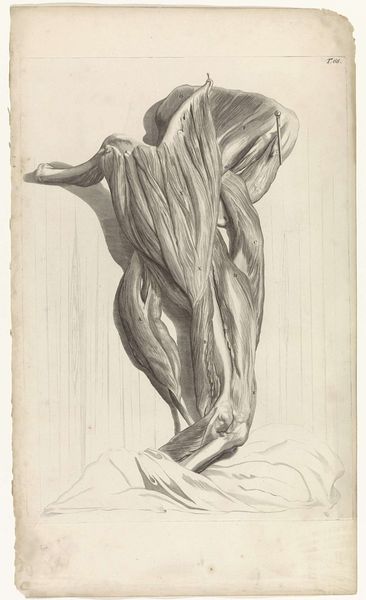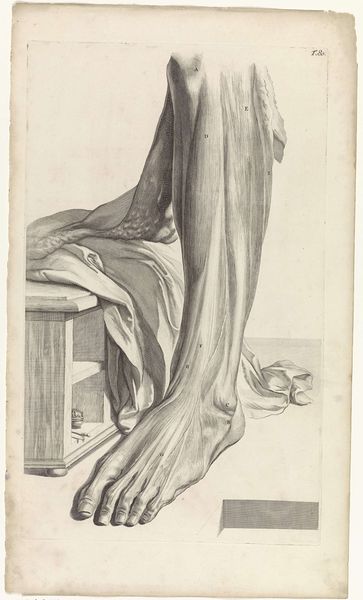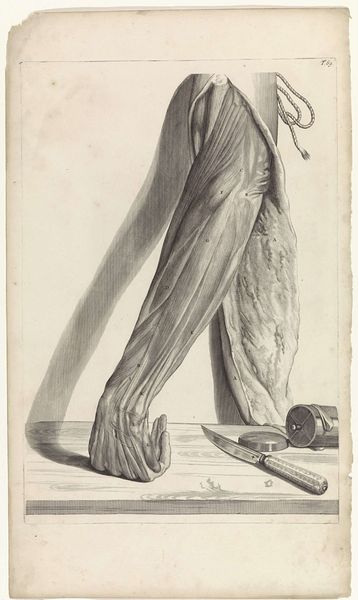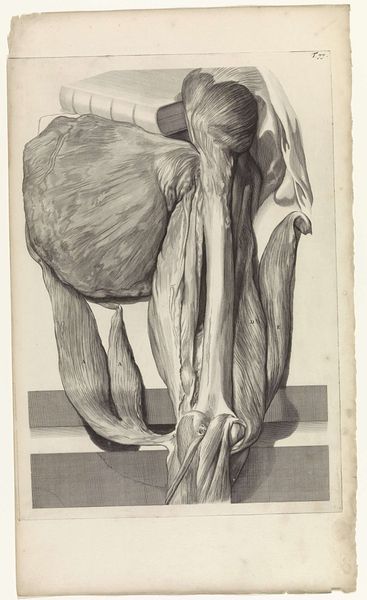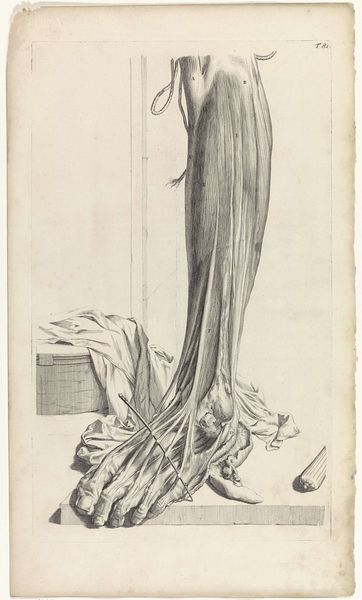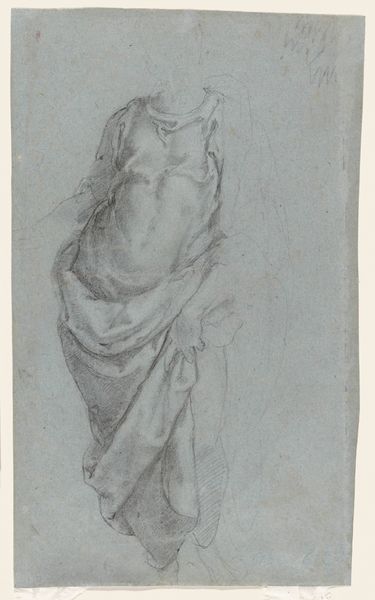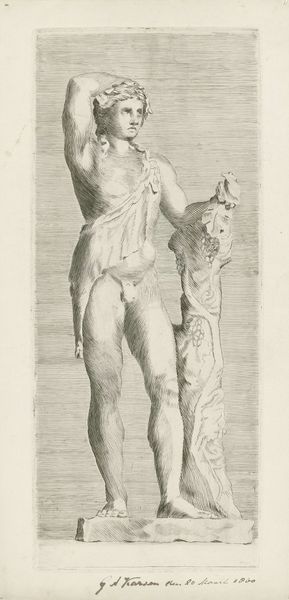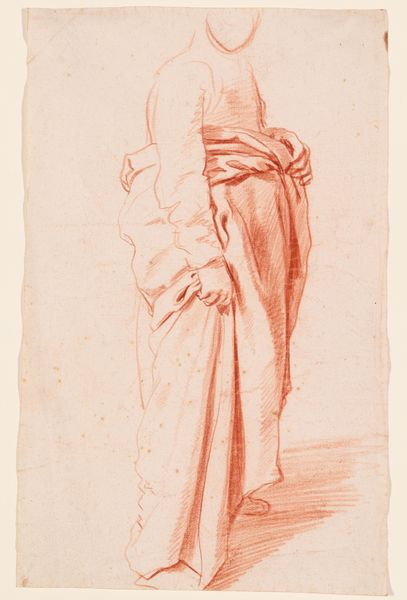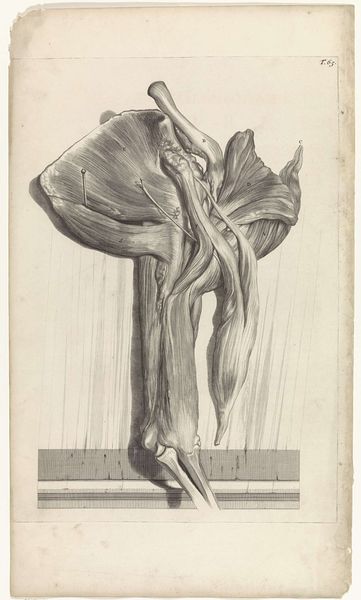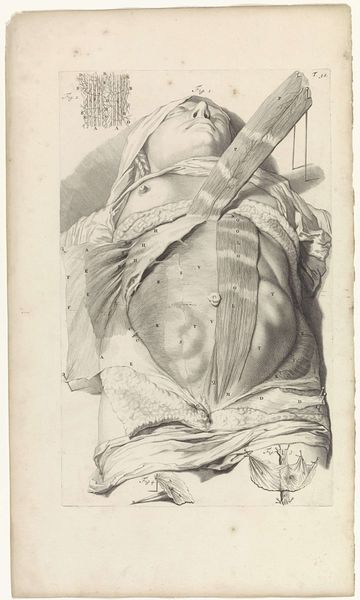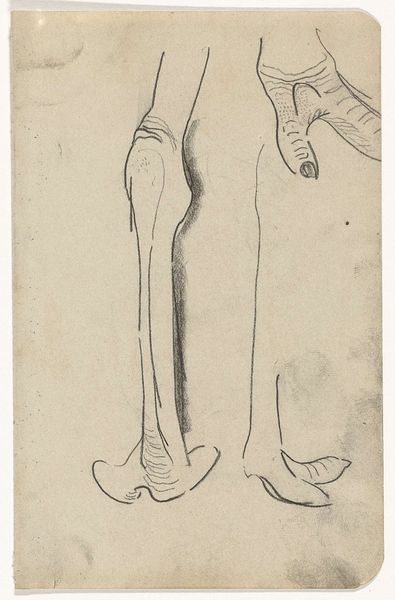
Tweede anatomische studie van de spieren van het linkerdijbeen 1685
0:00
0:00
pietervangunst
Rijksmuseum
drawing, pencil
#
pencil drawn
#
drawing
#
pencil sketch
#
figuration
#
11_renaissance
#
pencil drawing
#
pencil
#
history-painting
#
academic-art
#
realism
Dimensions: width 310 mm, height 487 mm
Copyright: Rijks Museum: Open Domain
Curator: Here at the Rijksmuseum, we have Pieter van Gunst’s anatomical study from 1685. Its full title is 'Tweede anatomische studie van de spieren van het linkerdijbeen,' a meticulous depiction of the muscles of the left thigh. Editor: My first thought? The sheer vulnerability captured here. The exposed muscle fibers—it’s stark, but fascinating. There is a raw intensity to it. Curator: Consider the materials used, pencil on paper. A readily available and relatively inexpensive medium allowed for precise and detailed documentation. Anatomy in the 17th century was undergoing significant developments; such drawings aided medical understanding and training. What can you say about its use as a teaching material? Editor: Absolutely. The level of detail…the artist doesn't shy away from showing the intricate web of human sinew. It speaks volumes about humanity's ongoing effort to demystify the inner workings of life. This feels almost reverent. Like a sacred unveiling of our fragile, temporal forms. It really captures something primal, a reminder of our corporeal reality. Curator: It highlights the power dynamics between observer and observed. In medical practice, this translates directly into control and manipulation. The subject of the drawing is disempowered by the medical gaze and processes, rendered passively under anatomical examination, where social meanings of flesh are challenged in medical practice and scientific thought. Editor: Do you think about the intent here? Was the piece simply created for educational use? Is this meant to be an objective recording of bodily reality, or something more evocative and psychologically potent? Curator: While primarily intended as scientific illustration, the very act of meticulous rendering transformed the clinical into something akin to high art. The labor involved is evident, elevating the image from simple documentation to a product of artistic skill. Editor: Perhaps its power stems from confronting our mortality, compelling us to contemplate our own existence. Curator: Precisely. Understanding the labour that goes into a pencil drawing like this shifts our focus. Van Gunst used relatively accessible materials for a drawing that now hangs on the walls of the Rijksmuseum. It gives us much to consider about labour, accessibility and access, as it transcends both clinical recording and traditional fine art. Editor: Yes, there’s certainly more to unpack in this evocative artwork. It seems like even the simple, clear choices that create this piece bring layers to the surface.
Comments
No comments
Be the first to comment and join the conversation on the ultimate creative platform.

